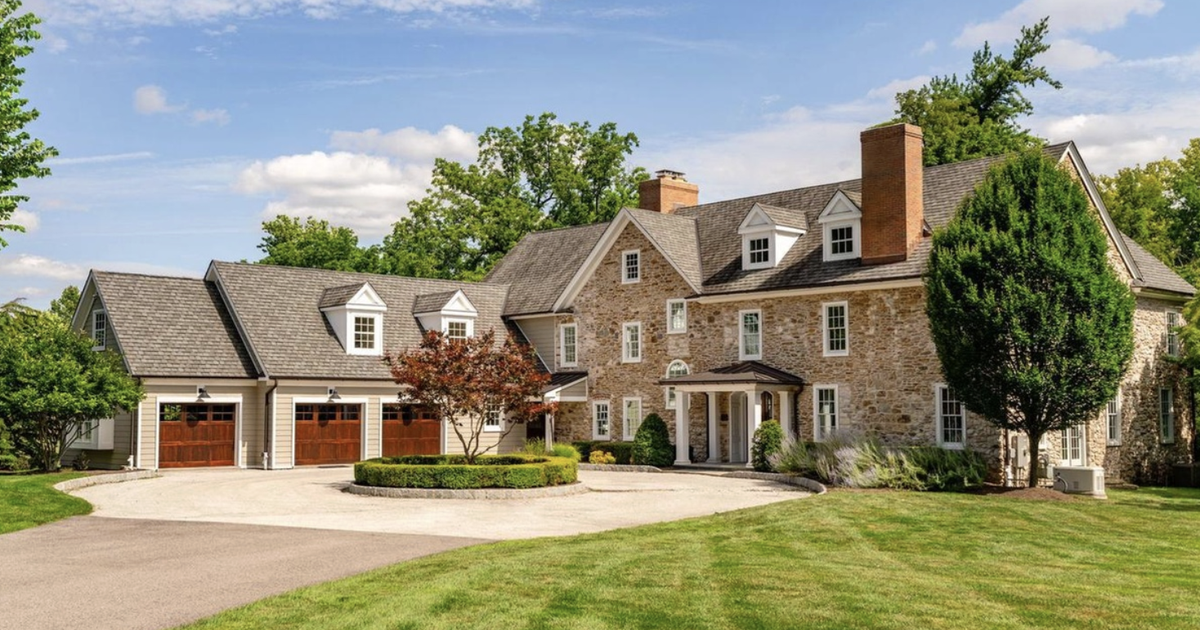Estate that was George Washington’s headquarters during Revolutionary War hits market for $3.3 million
By Historical Society,Michael Tanenbaum
Copyright phillyvoice

A Montgomery County estate that briefly served as former President George Washington’s headquarters during the Revolutionary War has been listed for sale for $3.3 million after undergoing extensive renovations to modernize the property.
The six-bedroom home at 1901 Pennsylvania Ave., in Fort Washington, was the general’s base of operations during the Whitemarsh encampment in late 1777. The Continental Army fortified the hills of Whitemarsh, north of British-occupied Philadelphia, to monitor troop movements and defend supply routes to the west in the weeks before making a pivotal move to Valley Forge to regroup for the winter.
MORE: UArts’ archives to be preserved by Historical Society of Pennsylvania
The fieldstone manor, built by prominent Quaker George Emlen in 1717, originally was used as the family’s summer home. It sits on about 2.6 acres of land that backs up to the Piszek Preserve, a wooded area that spans another 35 acres along the Sandy Run stream. The preserve is named after Edward J. Piszek, the founder of the frozen seafood brand Mrs. Paul’s Kitchen who lived at the home and supported the preservation of other historic properties in region before his death in 2004.
The Pisceks subdivided and sold the full property — which had included farmland — for $4.5 million in 2013. That land was developed into a high-end residential community. The remaining portion, including the three-story home, was purchased for $900,000 by husband-and-wife Demetrius and Morgan Sidberry in 2018. They undertook a full restoration of the 8,000-square-foot residence over a period of about four years.
“They really just tried their best to honor classic American architecture,” said listing agent James McFadden, of Kurfiss Sotheby’s International Realty. “They used things that would have been sourced or styled from the area for the house. Everything was done with a lot of intention.”
The project, the Sidberrys’ first renovation, was completed with builder Cherokee Construction, Asher Slaunwhite Architects and other interior design partners.
The Sidberrys preserved the estate’s curved wooden staircase that rises to all three floors and kept the home’s four stone fireplaces, including one in the main bedroom. The project also uncovered previously hidden windows in the attic that were exposed when ceilings on the third floor were vaulted.
In the final weeks of 1777, Washington’s Continental Army withstood three days of fighting with the British in the area of Whitemarsh and Chestnut Hill before the American withdrawal to Valley Forge. The winter encampment at Valley Forge is viewed as a turning point for Washington’s army, which became more disciplined under the training of Prussian officer Baron Von Steuben. France entered the war as an American ally the following May, offering reinforcements and strategic advantages Washington had not enjoyed earlier in the war.
A state historical marker on Pennsylvania Avenue notes that Washington used the house as his headquarters from Nov. 1, 1977, to Dec. 11, 1977. Fort Washington, which is part of Upper Dublin Township, received its name in honor of the encampment of about 12,000 soldiers Washington led during the time he stayed at the estate.
About a year after Washington left the estate, George Emlen wrote a letter to the general to follow up about compensation for damage that was done to his property during the encampment. Washington responded with an apology for “delay & difficulties,” but advised him to take the matter up with the Quartermaster’s Department that oversaw dwellings and provisions during the war.
The Emlen property remained a home for prominent Quakers until the late 19th century. It was then owned by a long line of wealthy families, according to records kept by the Springfield Township Historical Society. Most of the property owners kept it as a showpiece for guests and made various renovations, including the addition of two wings that did not exist in early photographs.
Piszek bought the property in 1956, converting it back into a family home. A fire in 1974 led to Piscek having to rebuild portions of the estate. He went on to host dignitaries including Pope John Paul II and Lech Walesa, the leader of Poland’s Solidarity movement. Piszek had his own state historical marker dedicated in Fort Washington over the weekend on the Wissahickon Trail.
McFadden said the property has already received strong interest, including from potential buyers outside the Philadelphia area.
“The profile is obviously someone who appreciates classic American architecture and is looking for ‘old house, new’ — turnkey,” he said. “This is very much a drop your toothbrush type of renovation and restoration. There’s not much that the next may want to do, outside of maybe some exterior projects like adding a pool.”